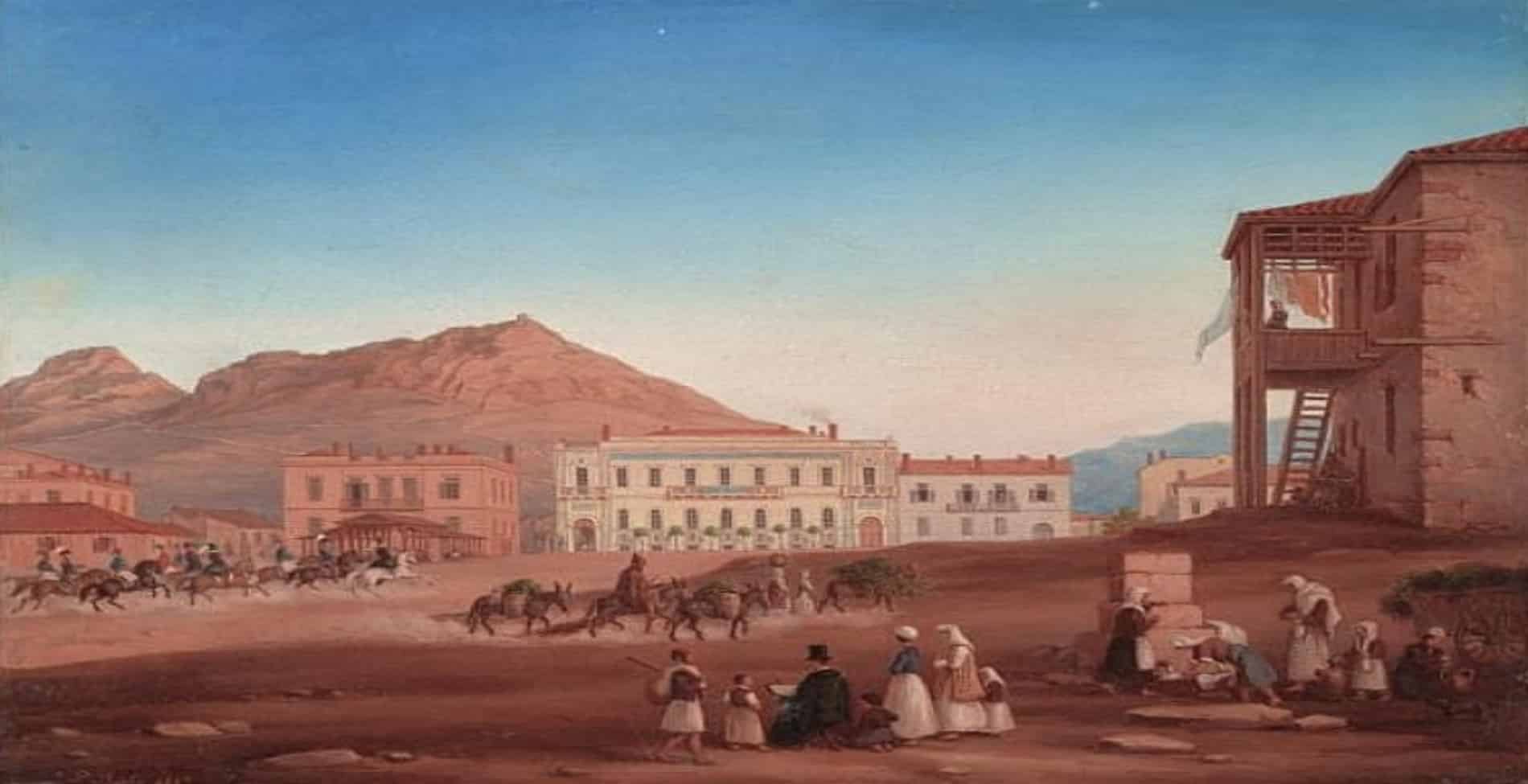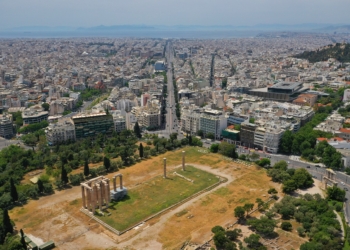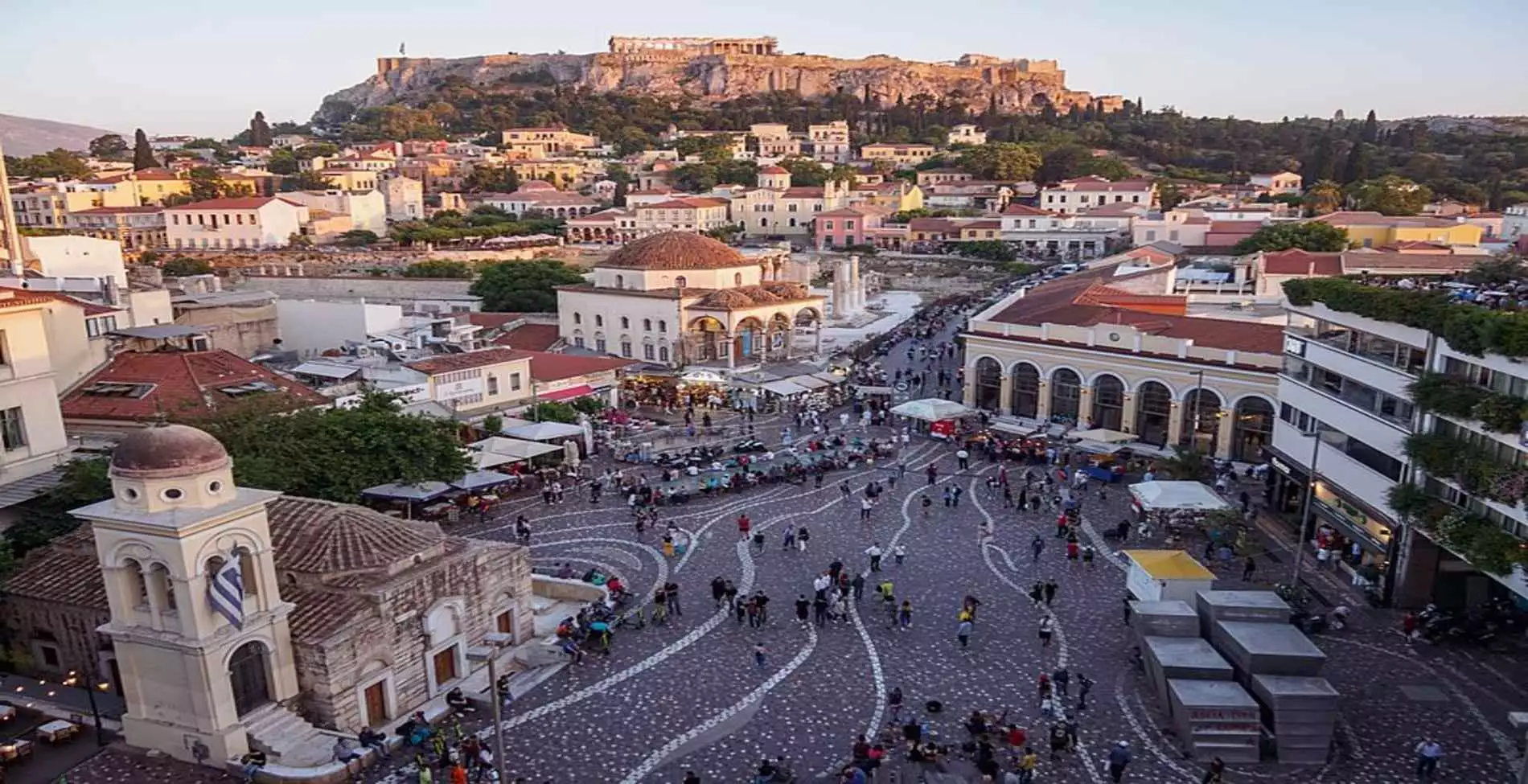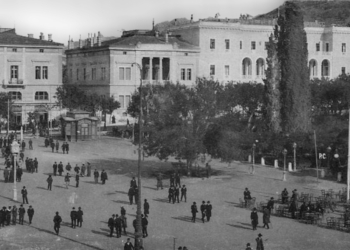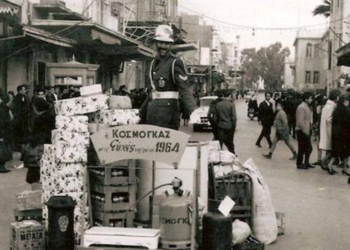In the early years of the 19th century, the old Athens certainly bore no resemblance to present image. It looked more like a large province, than the capital of the newly created Greek state. It was around 1835, however, when the first theatre of Athens was built. It was even placed in a very central point, namely on Aeolou Street.
What the first theatre in Athens looked like.
The first theatre for the entertainment of the public was located where the main building of the National Bank is today. It did not, of course, have the standards that a theatre has today, not in anyway. But it marked the beginning of those to come in Greece’s capital in the following years. The theatre was in fact a makeshift wooden structure, with no roof. It had few galleries as well. At that time, Aeolu street, at that particular section, was a deserted dirt road away from the inhabited cityThe families of Athensheard about the performances from the town-crier. He announced them to the market but they still did not seem to have a special interest in attending. Not even in 1836, when Athanasios Skontzopoulos invested all his property by tearing down the old shack. In its place he built a larger theater which still had no roof.
The exterior and the interior of the theatre
Looking at the theatre, to the right of the entrance, one could see the “ticket shop”. The entrance was illuminated with lanterns, which meant that you had to get too close to see it and get in. Entering now, you saw the central gallery which was intended for the royal family. That was the only one which had white fabric lining to cover the boards. Throughout the rest of the theatre, the trellis planks were visible. The theater square was coverd with dirt and had fifteen rows of wooden seats. But the show could be watched by spectators standing behind the seats. There was plenty of room there and right above the auditorium was the gallery.
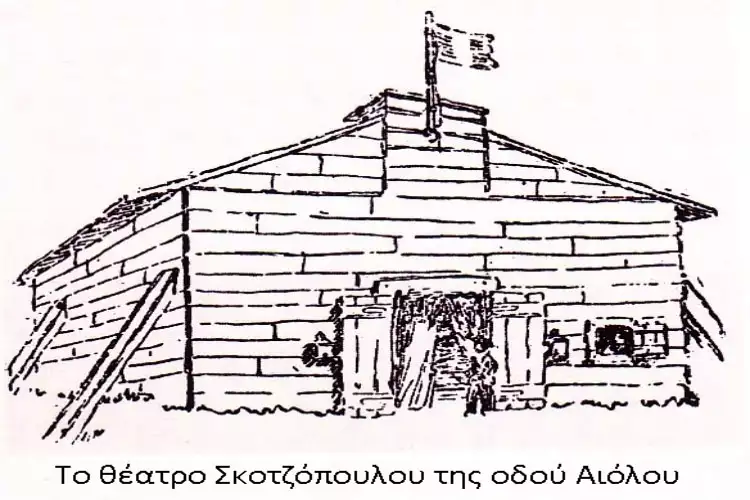
For us to understand how infantile this construction of a theater was, it is enough to know that many spectators lit their own lanterns in order to see the show. They were the same lanterns they used to see in the dark streets. And the stage, according to the writings of N. Laskaris, who was also the first to write about the theater- was as primitive as in the Shakespearian era. Although there was a painted background set, no one could understand what it represented, so that the imagination of the viewers would rather give shape to the scenography in accordance to the work. As far as actors’ costumes are concerned, they were always domino costumes, regardless of the work that was played. The orchestra, consisting of three musicaians, was not in front of the stage, but was cornered in one of the galleries.
The performances given
The first performance was given on May the 24th of 1836 with the paly “The Olympians”, of the famous writter of that time, Metastasios, translated by Rigas Feraios, and performed by a troupe of amateur actors who were exclusively male. The Skontzopoulos Theatre, as they finally called it, stayed in bussiness for fifteen months and presented 10 unprecedented Greek works of play. This is where the “Babylonia” of Byzantium was performed for the first time. In May 1836, Skontzopoulos went bankrupt and the theater was forced to auction. The shack was dismantled and the lenders took the timber of the theater instead of their money.
With information from 24grammata.com and the book “Psyrri, the neighborhood of heroes”
Exterior image: The area where the theatre was located as it was in 1847 – Source: wikipedia.org
When Athens was a province of about 120,000 inhabitants


